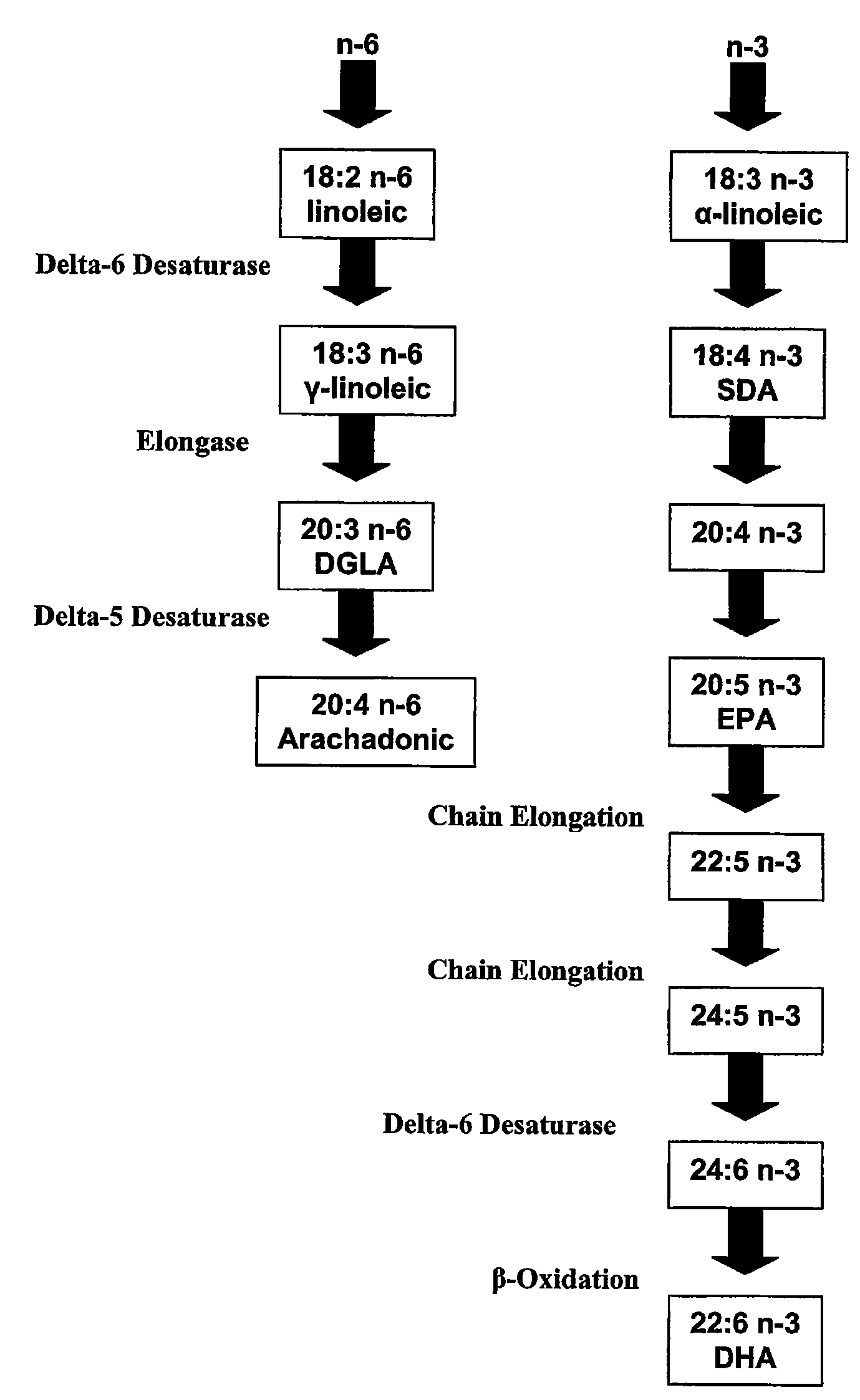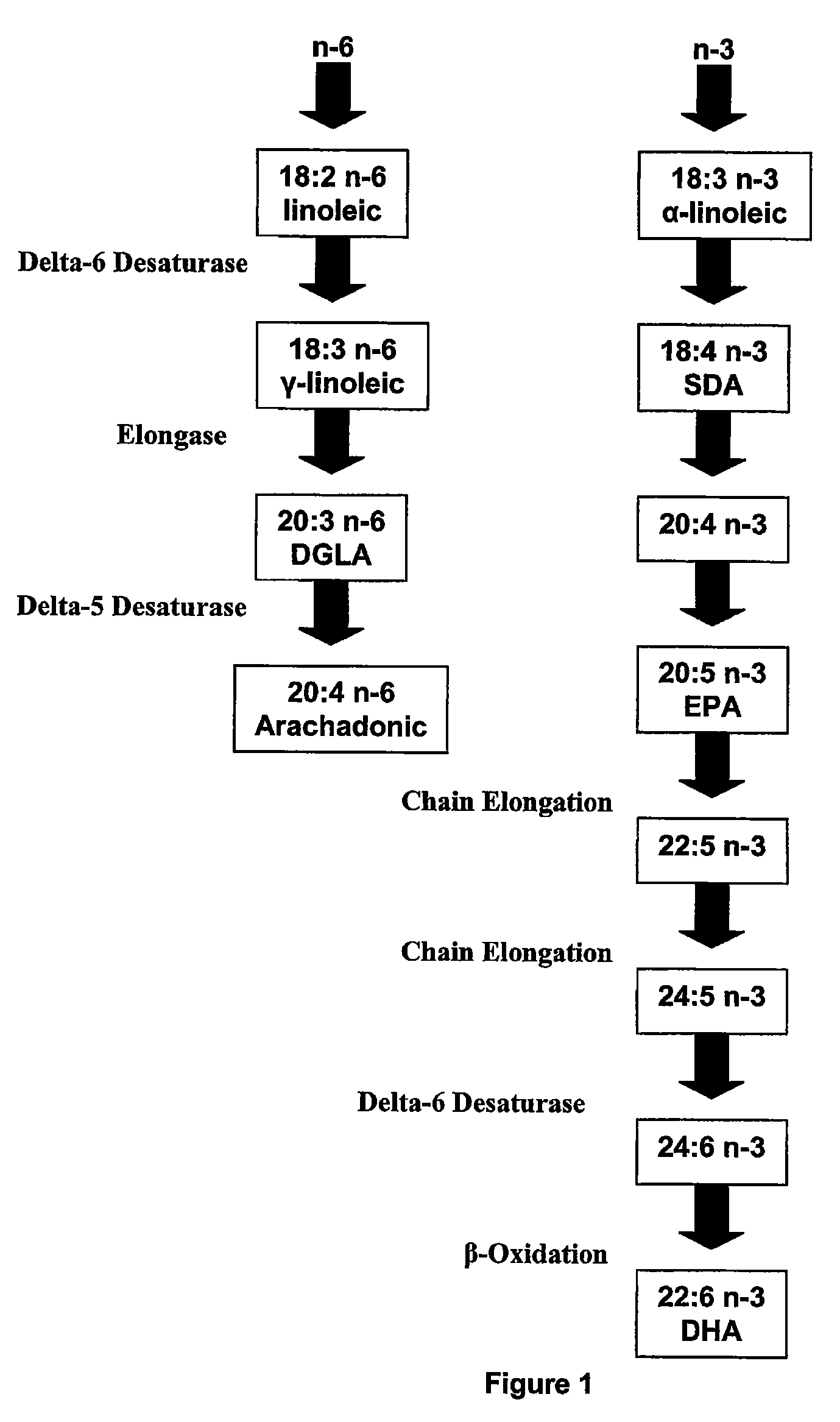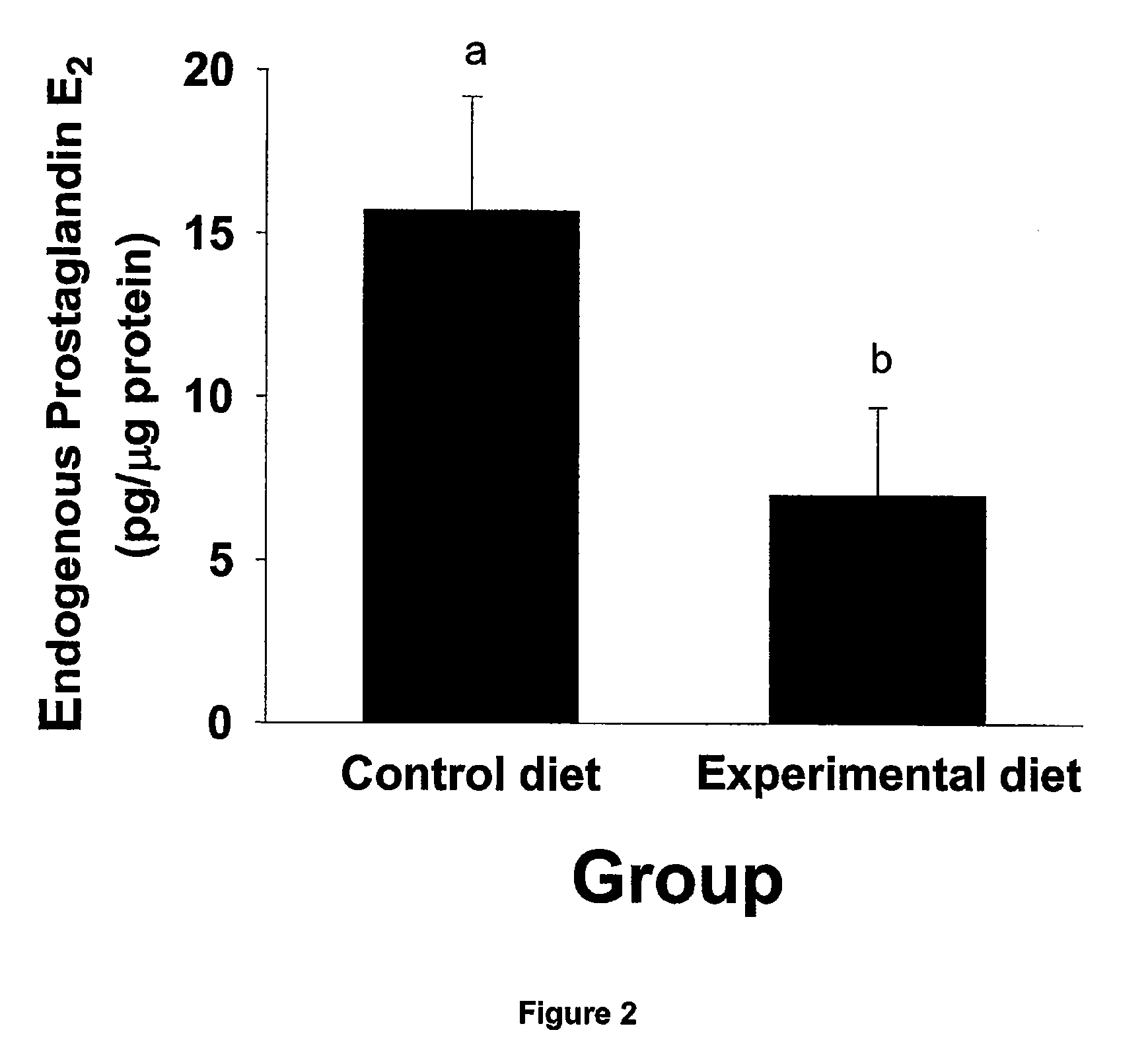Plant Derived Lipid Useful for Nutraceutical and Cosemeceutical Applications
- Summary
- Abstract
- Description
- Claims
- Application Information
AI Technical Summary
Benefits of technology
Problems solved by technology
Method used
Image
Examples
example 1
Extraction of Oil from Plant Seeds
[0106]Methods used to extract oil from seeds are well known to those skilled in the art and include crushing seed to expel the oil and or extracting the oil from the crushed seed with suitable solvents including organic solvents such as hexane, esters and alcohols, inorganic solvents such as water and supercritical fluids such as supercritical carbon dioxide. The oil extract can be optionally treated to remove impurities by filtration, washing, alkali refining, bleaching, deodorization, de-gumming and treatment with absorbants such as activated charcoal, alumina, montmorrilonite clays, molecular sieves and the like. The oil can be optionally treated with stabilizers and antioxidants to improve shelf-life and appearance. Oil processing is described in detail in “The Lipids Handbook” edited by Frank D. Gunstone, John L. Harwood and Fred D. Padley, published (1986) Chapman and Hall Ltd., ISBN 0 412 24480 2, pages 181-215.
example 2
Purification of PUFAs from Oil
[0107]In general, means for the purification of PUFAs include extraction with organic solvents, sonication, supercritical fluid extraction (e.g., using carbon dioxide), saponification and physical means such as presses or combinations thereof. Of particular interest is extraction with methanol and chloroform in the presence of water. E. G. Bligh & W. J. Dyer. (1959) Can. J. Biochem. Physiol. 37:911 917. Where desirable, the aqueous layer is acidified to protonate negatively-charged moieties and thereby increase partitioning of desired products into the organic layer. After extraction, the organic solvents are removed by evaporation under a stream of nitrogen. When isolated in conjugated forms, the products are enzymatically or chemically cleaved to release the free fatty acid or a less complex conjugate of interest and are subject to further manipulations to produce a desired end product. Desirably, conjugated forms of fatty acids are cleaved with potas...
example 3
Comparison of the Fatty Acid Composition of Buglosssoides arvensis with Echium plantageneum
[0109]In Table 4, the results of trials growing Buglossoides arvensis and Echium plantageneum under rigorously controlled conditions of sowing rate, nutrient input and harvesting methods. Fatty acid analysis and seed oil content for replicated trials of these plant species are shown in columns A and B (Buglossoides arvensis) and column C (Echium plantageneum). Unexpectedly, the gamma linolenic acid percentages were lower for Buglossoides arvensis when compared to Echium plantageneum and the stearidonic acid percentages were higher for Buglossoides arvensis than Echium plantageneum, even though the overall oil content percentages are similar.
TABLE 4Reference TrialsMolecular(gc area, %)AbbreviationFatty acidABCC14:0myristic acidC16:0palmitic acid4.274.547.01C18:0stearic acid1.811.993.61C18:n-9oleic acid7.017.3916.41C18:1n-11vaccenic acid0.590.61C18:2n-6linoleic acid11.1712.0014.96C18:3n-6γ-lino...
PUM
| Property | Measurement | Unit |
|---|---|---|
| Fraction | aaaaa | aaaaa |
| Fraction | aaaaa | aaaaa |
| Fraction | aaaaa | aaaaa |
Abstract
Description
Claims
Application Information
 Login to View More
Login to View More - R&D
- Intellectual Property
- Life Sciences
- Materials
- Tech Scout
- Unparalleled Data Quality
- Higher Quality Content
- 60% Fewer Hallucinations
Browse by: Latest US Patents, China's latest patents, Technical Efficacy Thesaurus, Application Domain, Technology Topic, Popular Technical Reports.
© 2025 PatSnap. All rights reserved.Legal|Privacy policy|Modern Slavery Act Transparency Statement|Sitemap|About US| Contact US: help@patsnap.com



